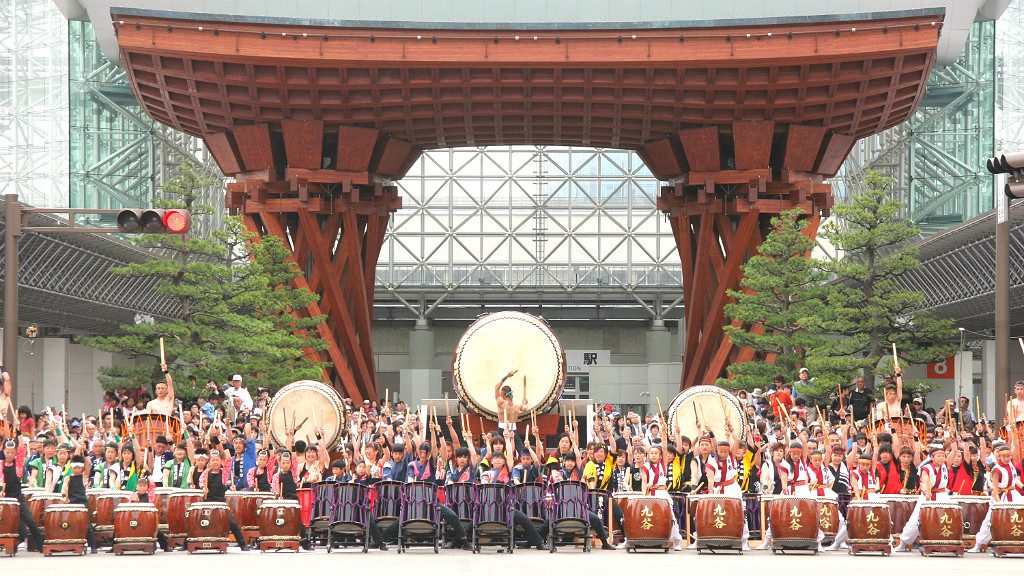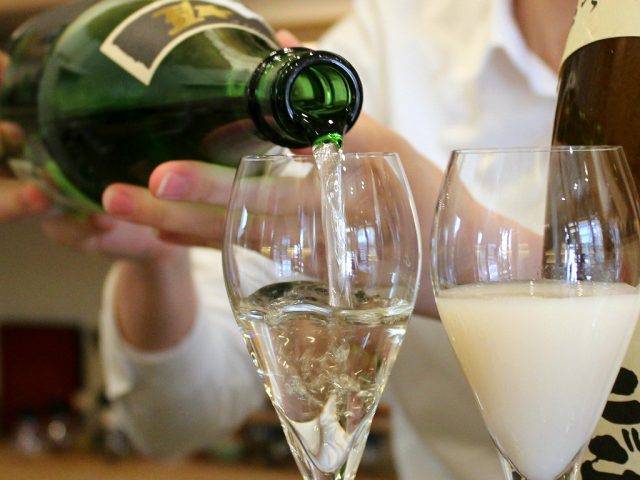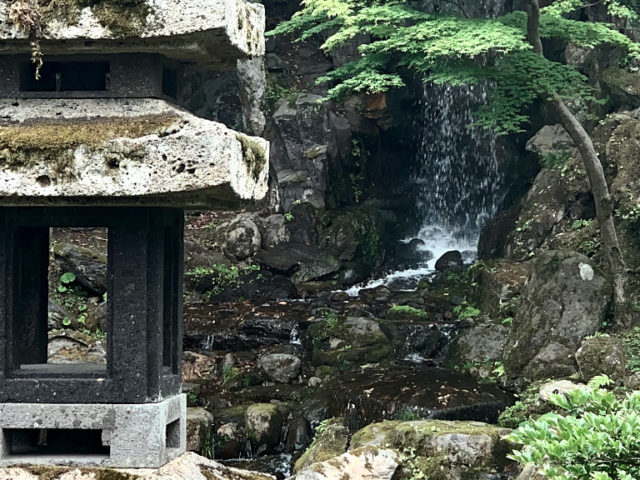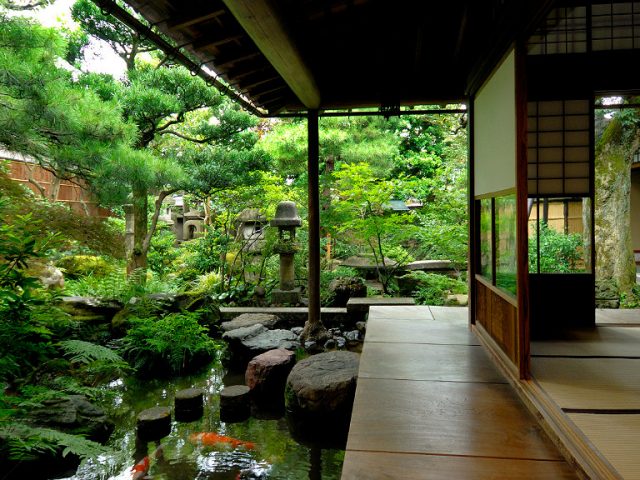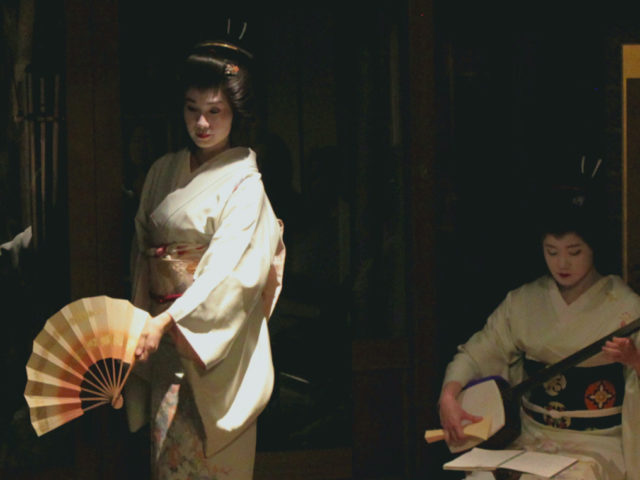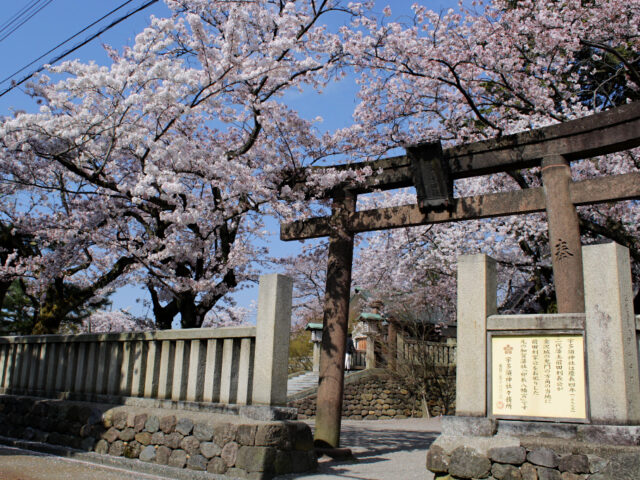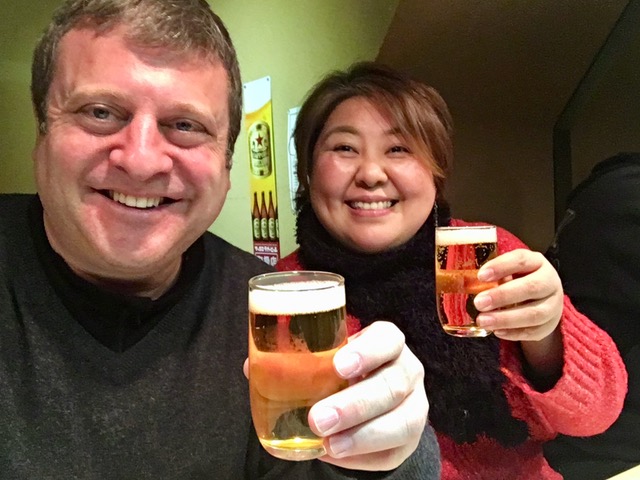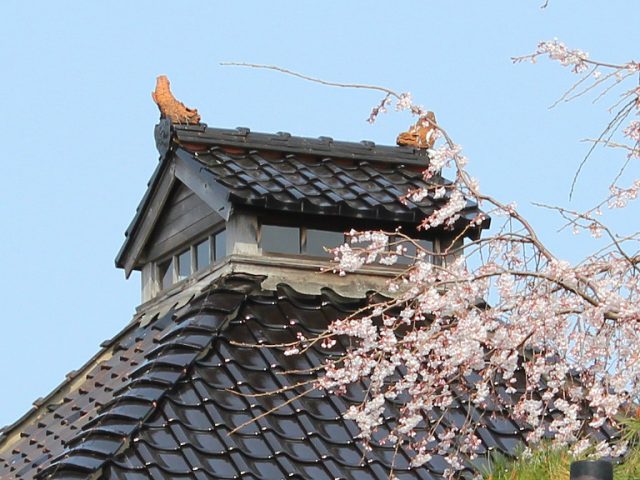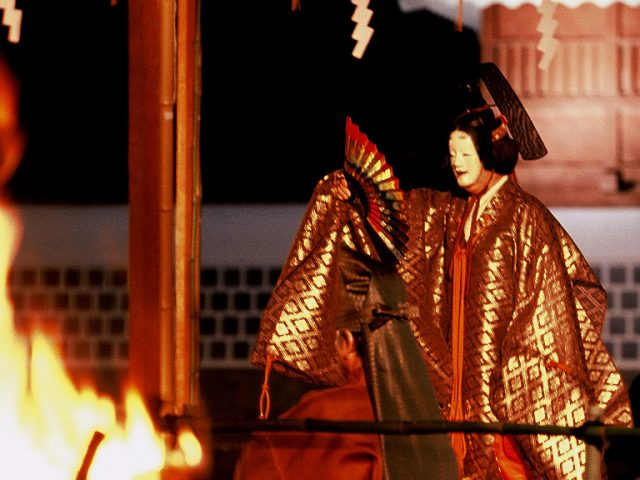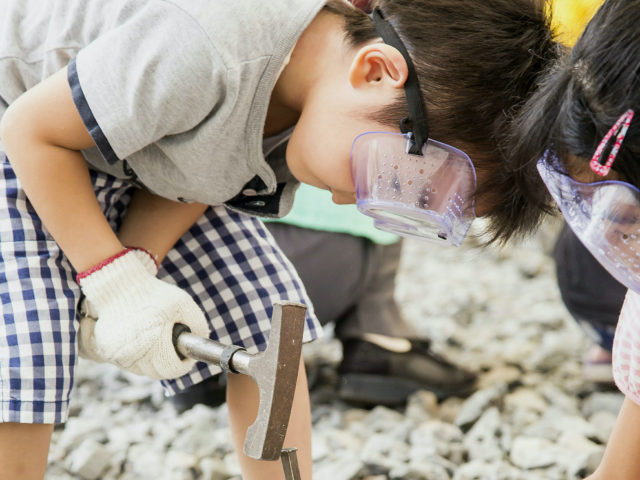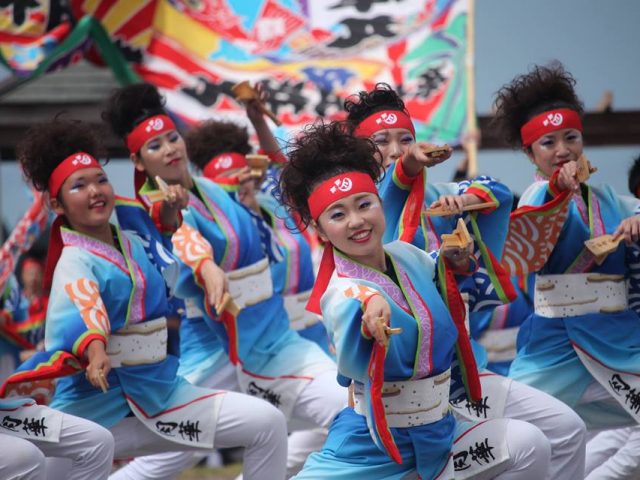Kanazawa’s Hyakumangoku Festival: Complete Guide
The 74rd Hyakumangoku Festival
June 6th – June 8th, 2025
↓ jump to complete festival schedule below↓
The largest Japanese festival of Kanazawa is a three-day bash at the start of June centered around the city’s rich samurai and artisan history. Taiko drums, marching samurai warriors, music on Japanese flutes and shamisen, lion dances, noh plays, yosakoi, tea ceremony, and over 10,000 people dancing in the streets at once!

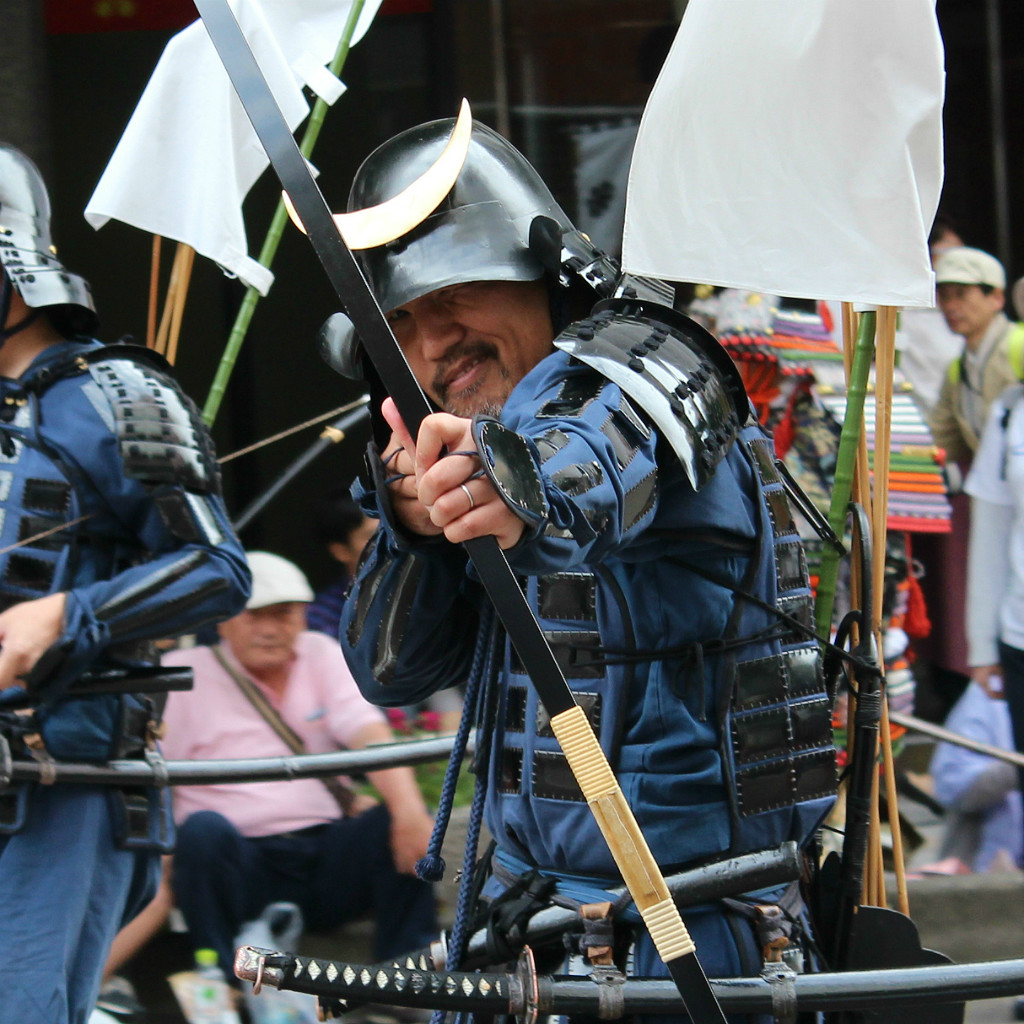
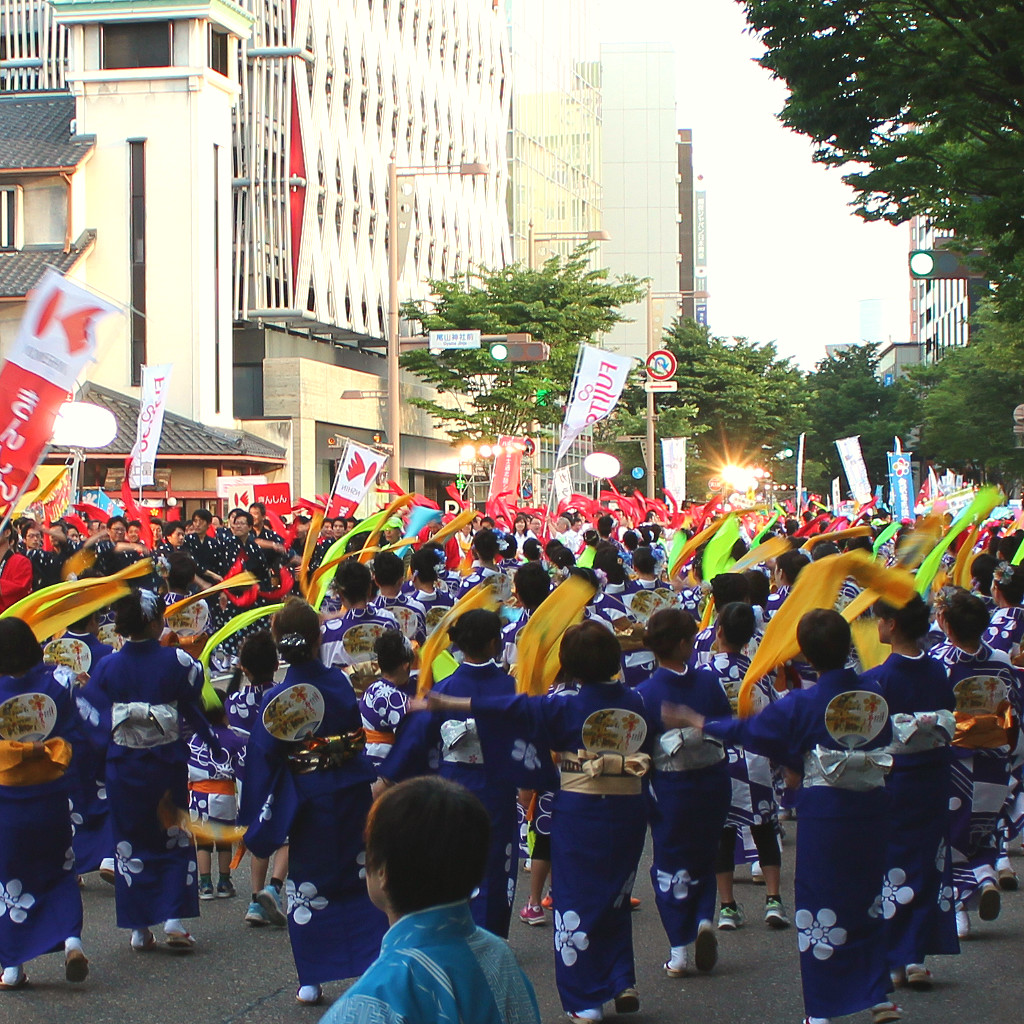
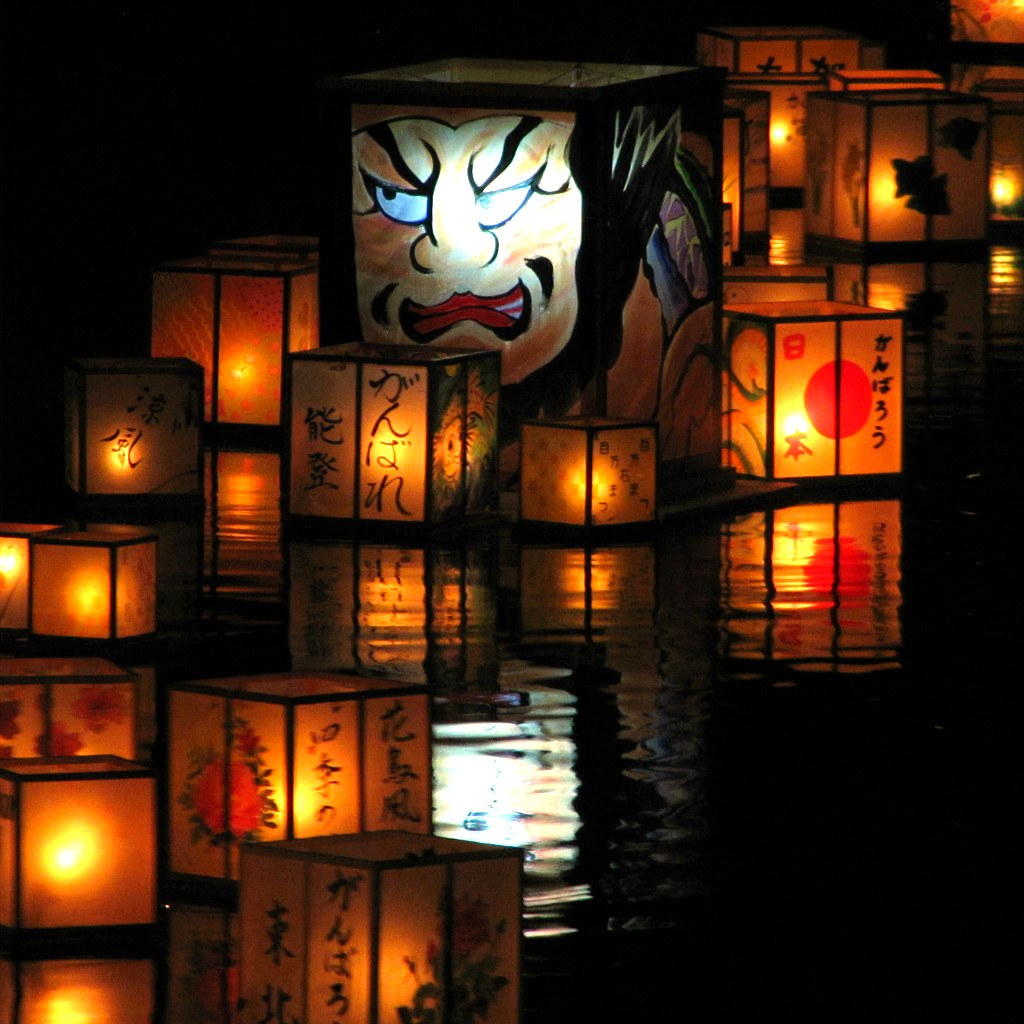
A Spiritual Start


Solemn ceremonies start early at Kanazawa Shrine. Shinto priests make offerings to the kami of the sacred well before drawing water. The procession then makes it’s way to Seisonkaku Villa, where tea whisks from the previous year are thanked for their service and ceremonially burned. Attendees may be gifted with a pack of kaishi, Japanese paper napkins specially made for the tea ceremony.
Lanterns in the Streets
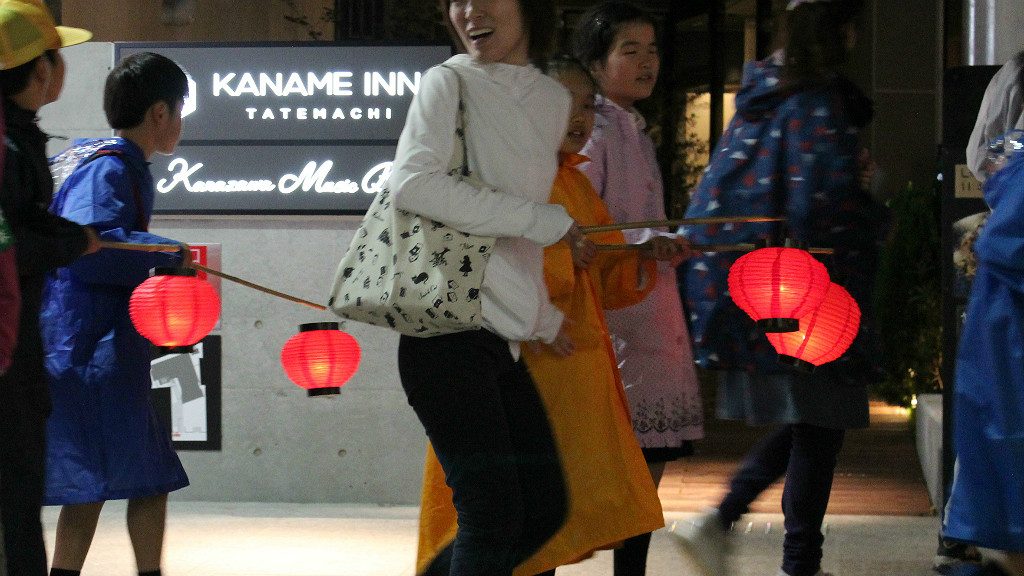
The festivities begin on a Friday evening in early summer with children parading along the streets, holding lanterns and chanting along to taiko drums. Starting from Kanazawa Central Park (during a typical year, though in 2022, they will start in smaller groups at different points), they march out along many streets throughout Kanazawa, lighting the way with brilliant red orbs.
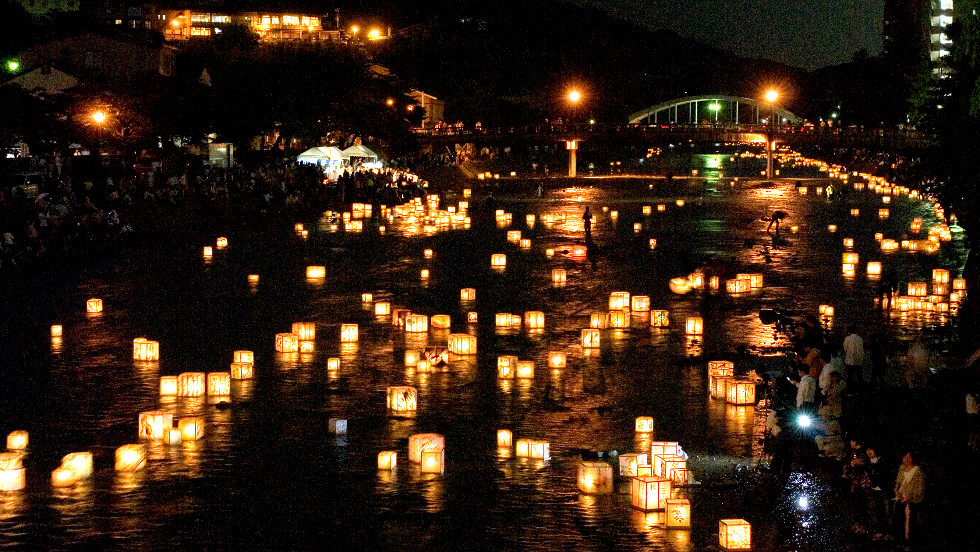
Along the Asano River, the Kaga-yuzen Tōrō Nagashi is held, and hand-painted silk-screen lanterns are released to the current, lighting the water as they float from bridge to bridge, guiding the spirits of the departed and inviting them to join in on the weekend’s festivities.
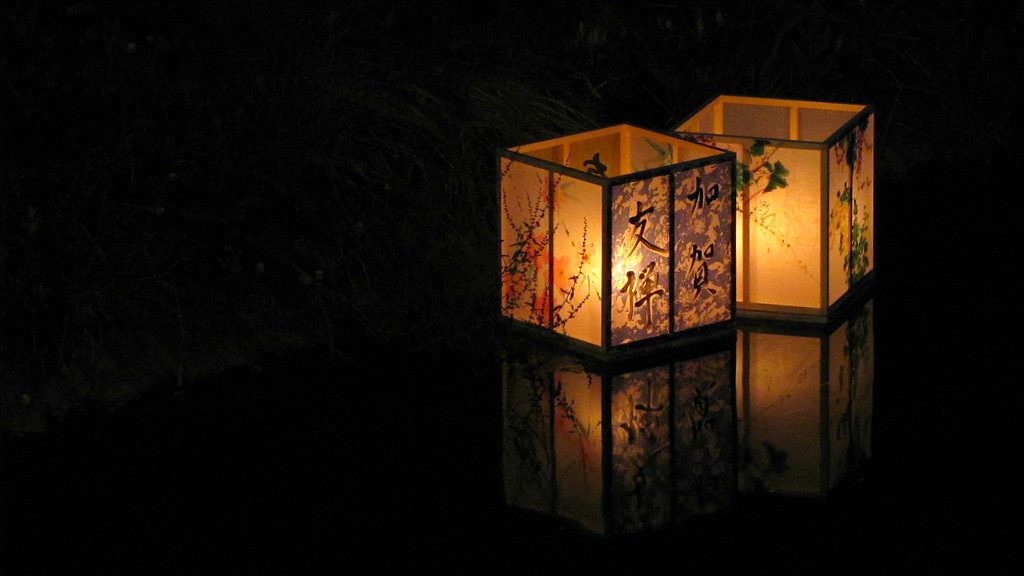
Taiko, Samurai, and Castles—Oh Noh!

Festivities start early in Kanazawa Castle Park with music, dancing, food, and games.
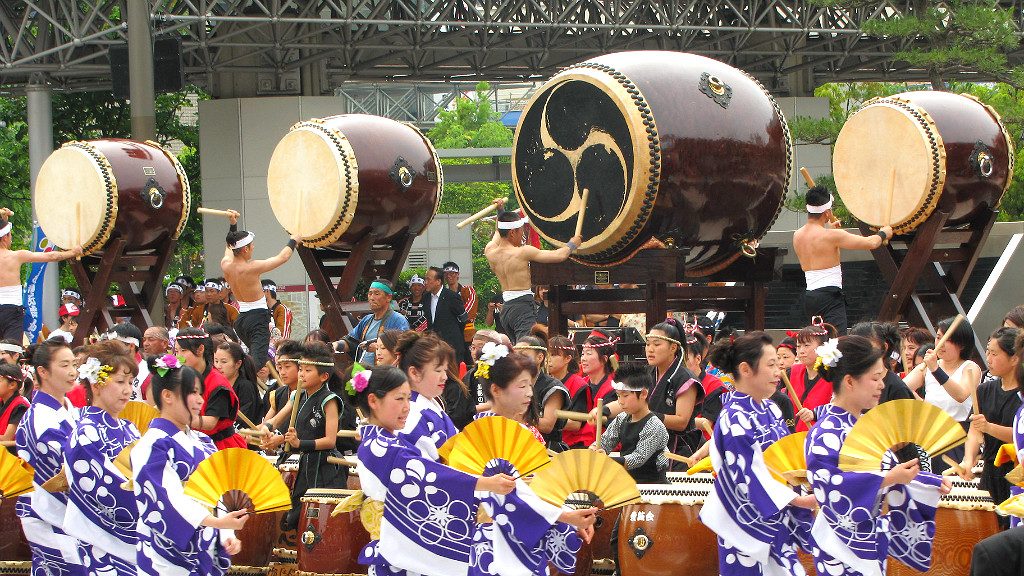
The grand commencement ceremony of the weekend begins Saturday afternoon in front of Kanazawa Station. A hundred taiko drummers play in unison in front of Kanazawa Station’s “Drum Gate,” to introduce the festival’s main event, the Hyakumangoku Parade.
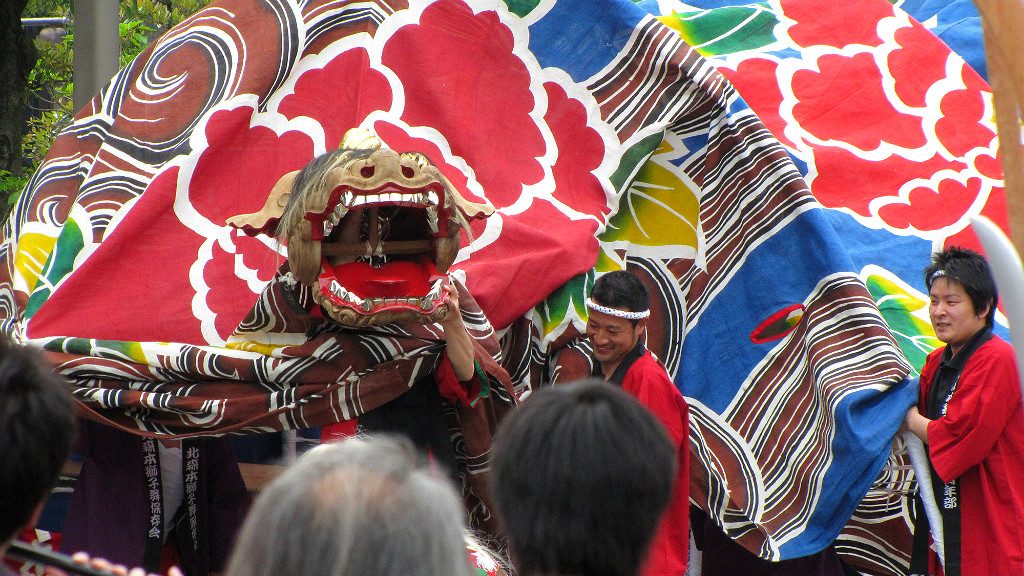
As with many city parades in the west, the matrix includes local dance, music, and cival service groups, including firefighters and police. However, the scene soon transitions to more unusual fare, as the paraders pause to play ancient songs on bamboo flutes and taiko drums and put on lion dancing shows with traditionally made Kaga Lion Dance Masks, one of the areas many crafting specialties.
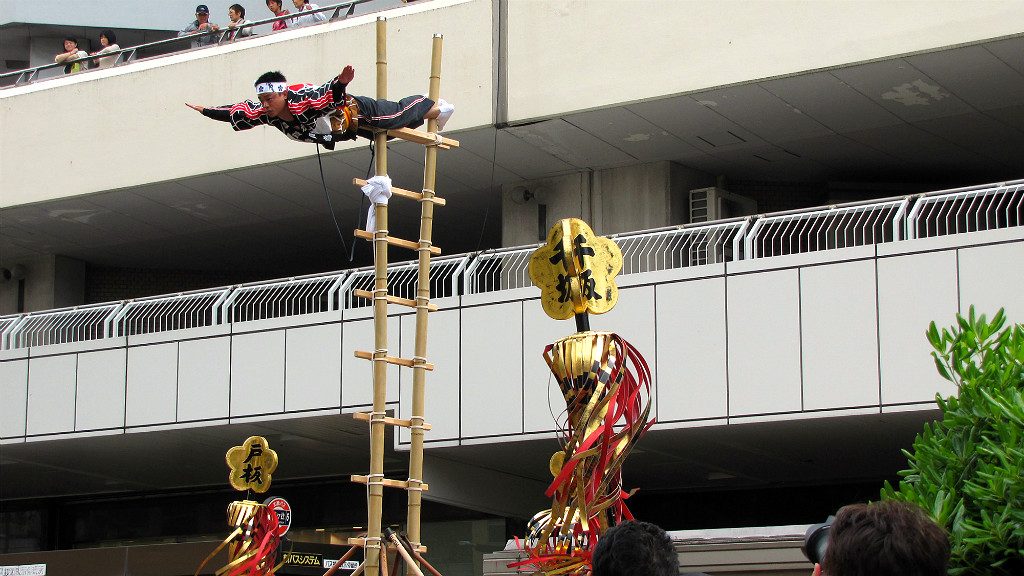
In a tradition more than three centuries old, firefighters climb bamboo ladders supported only by others’ hands. As they perform acrobatics at the ladders’ peak, massive tassels shake and twirl, and the crowds cheer.
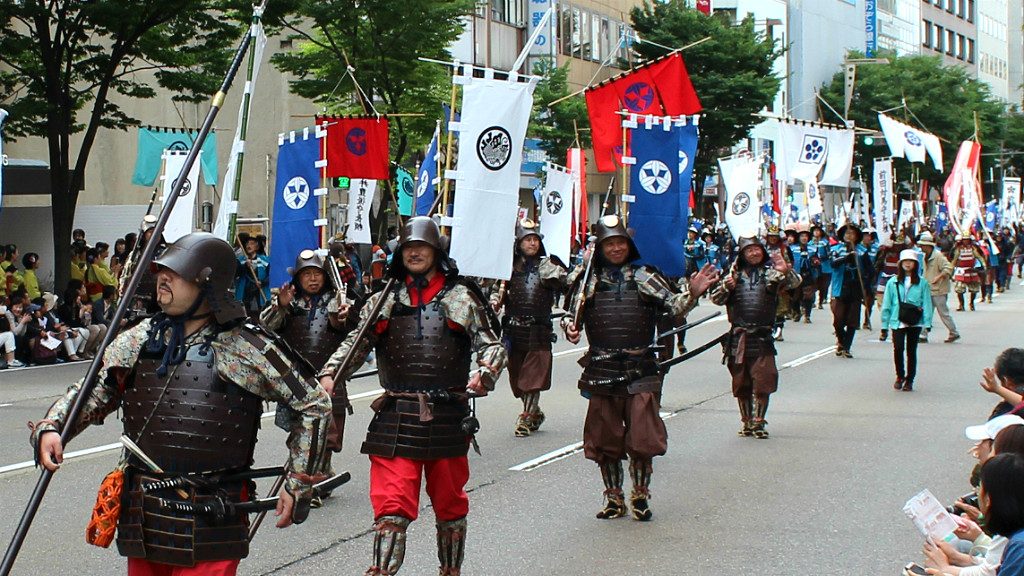
Finally, the re-enactors arrive, dressed in full samurai battle wear and armed with katanas and bows, as they make way for the star of the show, Kanazawa’s first lord, Toshiie Maeda, on horseback.
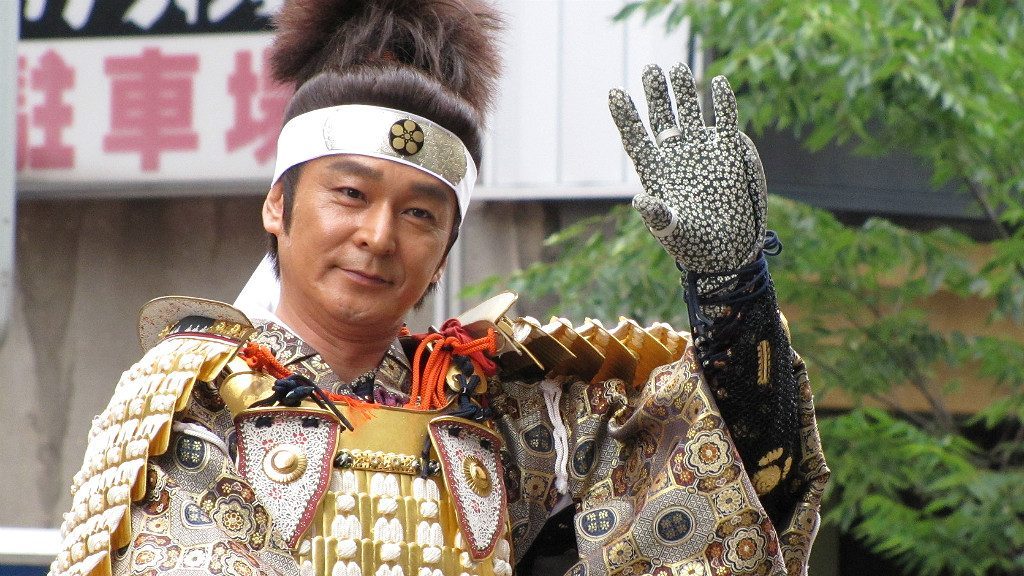
The Maeda lord and his wife are played each year by a different pair of well-known actors, and so are always crowd favorites.


The parade precedes Lord Maeda to the castle, performing for the gathered crowd.
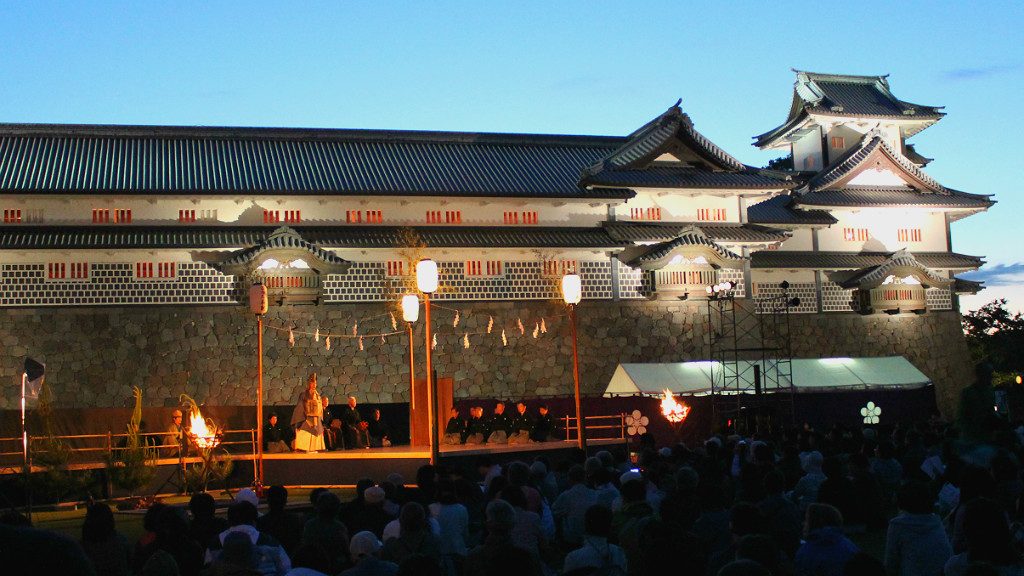
The parade culminates in front of Kanazawa Castle, where the Maedas are officially welcomed and a Noh plays are performed for the crowd on into the evening.
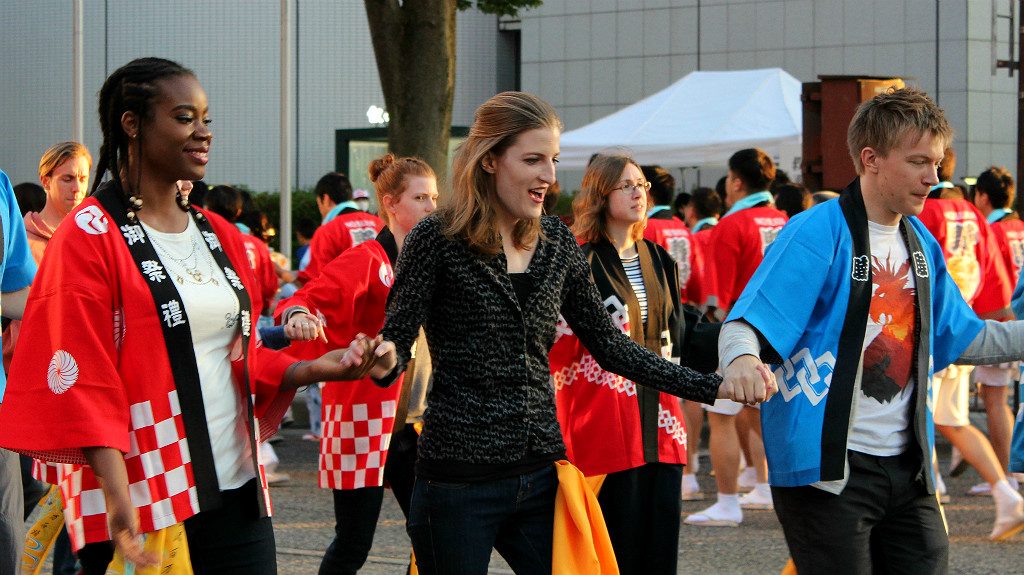
As the parade ends, the roads are flooded with more than 10,000 dancers, volunteers and performers from the city occupy the street in a massive swirl of movement for two solid hours. Jump in with some of the tourist-welcoming groups and follow along with the traditional dance steps of the Kaga region.
If all the festivities make you hungry, you’re in luck! Throughout Saturday afternoon and evening, food booths and tents are open along the main roads and near Oyama Shrine for a tasty bite on the go.
Tea Ceremony for Everyone!
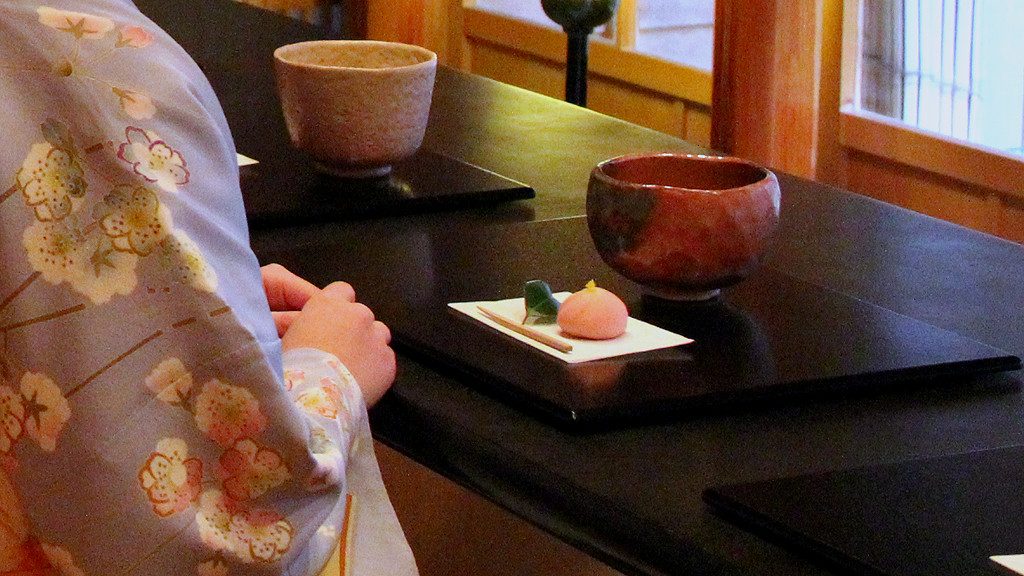
Japan has only a few “Grand Tea Ceremony” events, where the public is invited to participate in an all-day celebratory tea ceremony together.
One such Grand Tea Ceremony is this one during the Hyakumangoku Festival, as tea ceremonies are hosted at various locations in and around Kenroku-en on Saturday and Sunday from 8:30 a.m. until 4:00 p.m. Same day tickets for tea services are first come first serve at 1500 yen a piece, but can be bought in advance at a discount of two for 2000 yen at select locations, including Nodaya on Tatemachi Street, just a few blocks away from Kaname Inn Tatemachi.
Hyakumangoku Complete Festival Schedule
Below is the approximate schedule based on past events, and we will update when new information is available. Please check this year’s schedule closer to the festival dates for final confirmation (in Japanese).
Note that events on the day may differ due to weather or other circumstances.
DAY 1: Friday, June 6th
9:00 a.m.
Water is ceremoniously drawn from Kanazawa’s own sacred well at Kanazawa Shrine, near the back of Kenroku-en Garden and brought to Seisonkaku Villa. Tea-related ceremonies performed outside.
10:00 a.m.
Shinto prayers begin at Oyama Shrine.
1:00 p.m.
Tea dedication to the gods at Oyama Shrine.
6:00 p.m. – 7:00 p.m.
Kenshibu, “sword & fan and poetry dance,” dedication at Oyama Shrine.
6:40 p.m. – 9:00 p.m.
Children’s parade with lanterns, festival costume, and drums, departing from the Shiinoki Culture Complex on route around the Kohrinbo and Musashi-ga-Tsuji areas.
7:00 p.m. – 9:00 p.m.
Kaga Yuzen Lanterns launched down the Asano River, beginning at Tenjin-bashi Bridge west of the Higashi Chaya District.
(In case of rain, this event may be cancelled or postponed to Saturday.)
DAY 2: Saturday, June 7th
8:30 a.m. – 4:00 p.m.
(reception until 3:00 p.m.)
One of Japan’s rare Grand Tea Ceremony events. Service is provided in and around Kenroku-en Garden.
9:30 a.m. – 7:00 p.m.
Various ceremonies at Oyama Shrine, (most notable events listed below).
10:00 a.m. – 6:00 p.m.
Kanazawa Castle Park becomes something of a fairground, with performances throughout the day, crafts, workshops, kimono rentals, songs, and dancing, including traditional lion dances.
10:30 a.m. – 4:00 p.m.
Traditional music and dancing performed throughout the day at The Kanazawa Theater (Kagekiza), located between the 21st Century Museum and the D.T. Suzuki Museum.
1:00 p.m. – 7:00 p.m.
Food stands open up near Oyama Shrine and elsewhere along the parade route.
A beer garden opens on Oyama Shrine’s grounds.
2:00 p.m. – 2:20 p.m.
The Parade Starts!
Commencement Ceremony in front of Kanazawa Station. Dancing, music, and a hundred taiko drums striking in unison.
2:20 p.m. – 5:30 p.m.
The Hyakumangoku Parade begins!
This is a full parade, with bands, batons, lion dances, walking shrines, acrobatics, and re-enactors in full samurai costume. The parade starts from Kanazawa Station, turns right at Musashi-ga-Tsuji (near Omicho Fish Market), left into Hirosaka, and left again to Kanazawa Castle Park.
3:00 p.m. – 3:30 p.m.
Karate demonstration at Oyama Shrine.
4:00 p.m. – 4:30 p.m.,
Taiko performance in front of Oyama Shrine.
4:00 p.m. – 6:00 p.m.
The Parade Ends!
Entrance Ceremony, as the figures of Toshiie Maeda and his wife O Matsu no Kata are welcomed at Kanazawa Castle.
6:00 p.m. – 8:00 p.m.
The Grand Dance of more than 10,000 people overtakes the Kohrinbo, Katamachi, and Hirosaka neighborhoods in downtown Kanazawa.
6:30 p.m. – 7:30 p.m.
Bonfire at Oyama Shrine.
6:30 p.m. – 7:00 p.m. *
Children’s Noh performance at Kanazawa Castle Park.
7:00 p.m. – 9:00 p.m. *
Noh and Kyogen performances at Kanazawa Castle Park, lit by firelight.
* Time may vary according to earlier events; in case of foul weather, productions will be held at the Ishikawa Prefectural Noh Theatre.
DAY 3: Sunday, June 8th
8:30 a.m. – 4:00 p.m.
(reception until 3:00 p.m.)
One of Japan’s rare Grand Tea Ceremony events. Service is provided in and around Kenroku-en Garden.
9:00 a.m. – 5:10 p.m.
Various ceremonies at Oyama Shrine.
9:00 a.m. (start) (H) not confirmed for 2025
Kyudo, traditional Japanese archery event behind Kanazawa Castle.
10:00 a.m. – 4:00 p.m.
Kanazawa Castle Park becomes something of a fairground, with performances throughout the day, crafts, workshops, kimono rentals, martial arts demonstrations, songs, and dancing, including traditional lion dances.
10:30 a.m. – 4:00 p.m.
Traditional music and dancing performed throughout the day at The Kanazawa Theater (Kagekiza), located between the 21st Century Museum and the D.T. Suzuki Museum.
11:00 a.m. – 11:40 a.m.
Iaido demonstration at Oyama Shrine. When the tension between swordsmen breaks, the most important move is the first one: the drawing of the sword.
11:30 a.m. – 12:00 p.m. time not confirmed for 2025
Traditional Meiji-era artillery demonstration on the backside of Kanazawa Castle (first showing).
2:20 p.m. – 2:40 p.m. time not confirmed for 2025
Traditional Meiji-era artillery demonstration on the backside of Kanazawa Castle (second showing).
3:00 p.m. – 3:50 p.m.
Hōchōdō demonstration at Oyama Shrine: In this centuries-old Shinto practice, a master practitioner will use only a large knife and metal chopsticks to finely cut an offering of fish for the gods, untouched by human hands.
4:30 p.m. – 5:10 p.m.
Kendo demonstration at Oyama Shrine.
Kaname Inn Tatemachi is centrally located to most of the activities of the Hyakumangoku Festival! Moreover, the street is protected from much of the noise throughout the city, allowing for a quiet night’s sleep even as the late evening stays lively, so please do consider staying with us if you’re planning to be in town for the events.
Before and during the parade, the main roads through the city will be closed, and throughout the entire festival, taxis will be limited. Please keep this in mind when traveling during festival days.
See you soon!
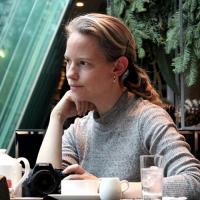
About a decade ago Rachel fell off a bus and then fell in love with this traditional-crafts and ice-cream-consuming capital of Japan. Editor and amateur photographer with a penchant for nature and history. Not actually fifty songbirds in a trench coat. (Former penname: Ryann)

